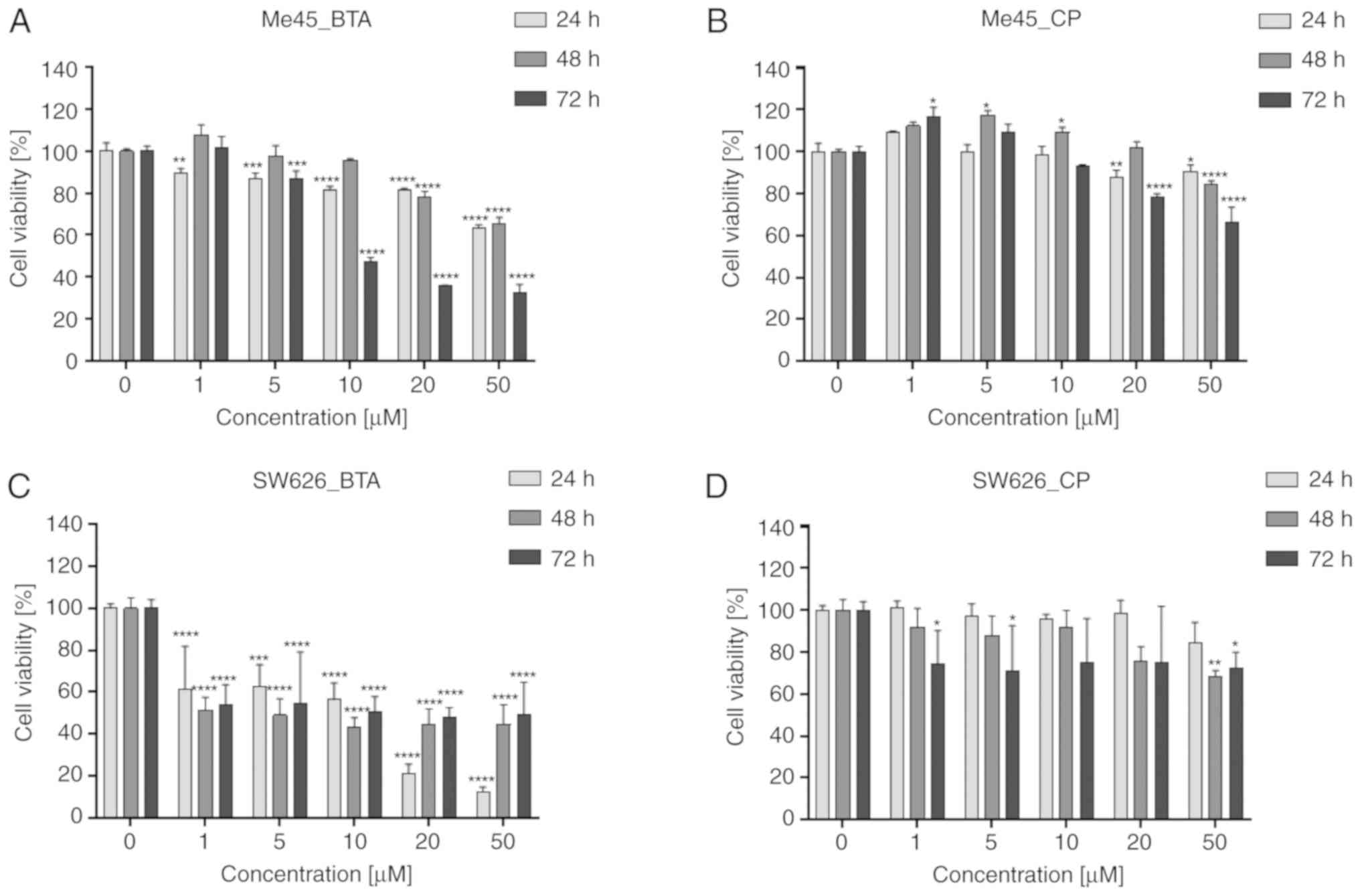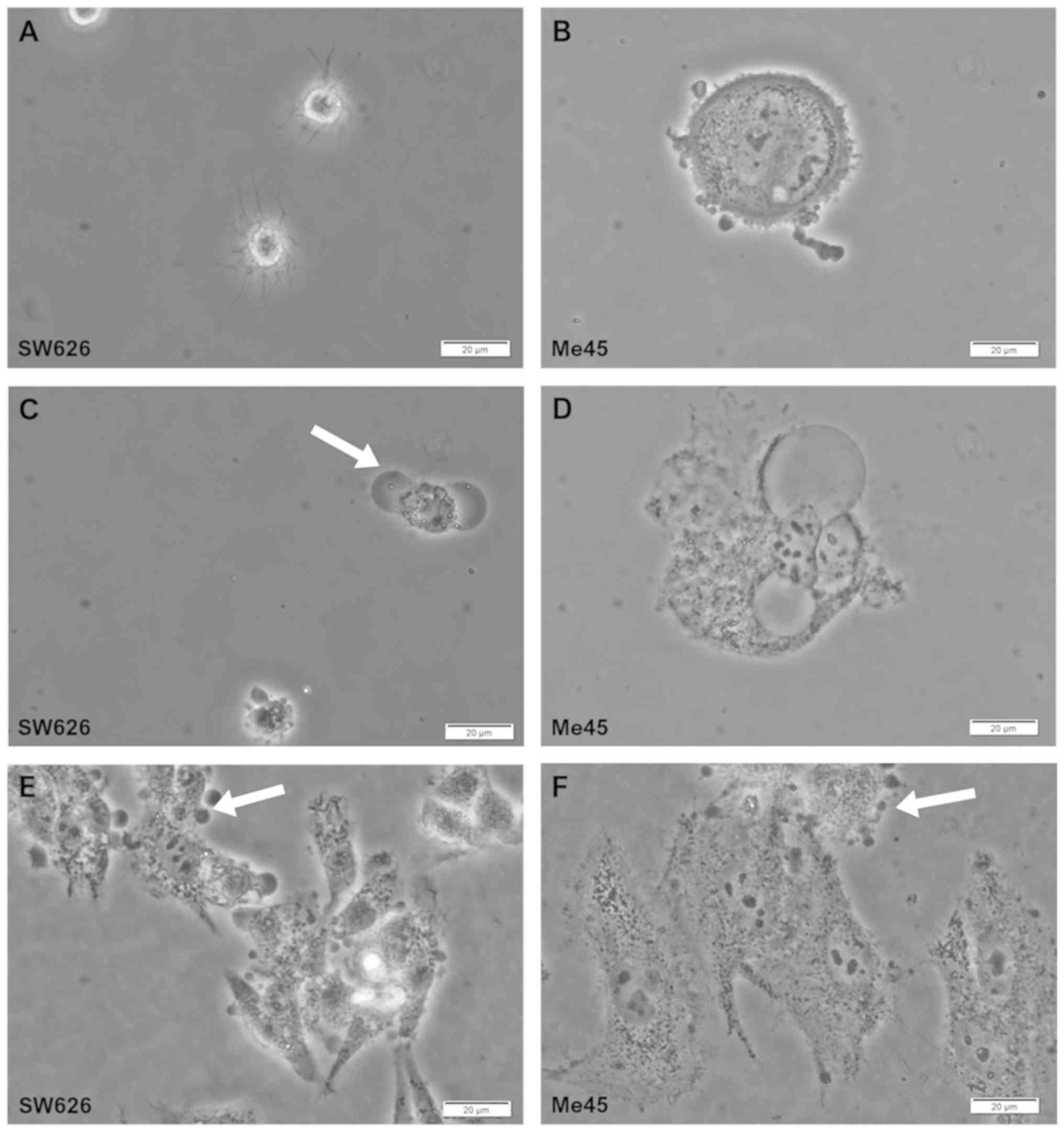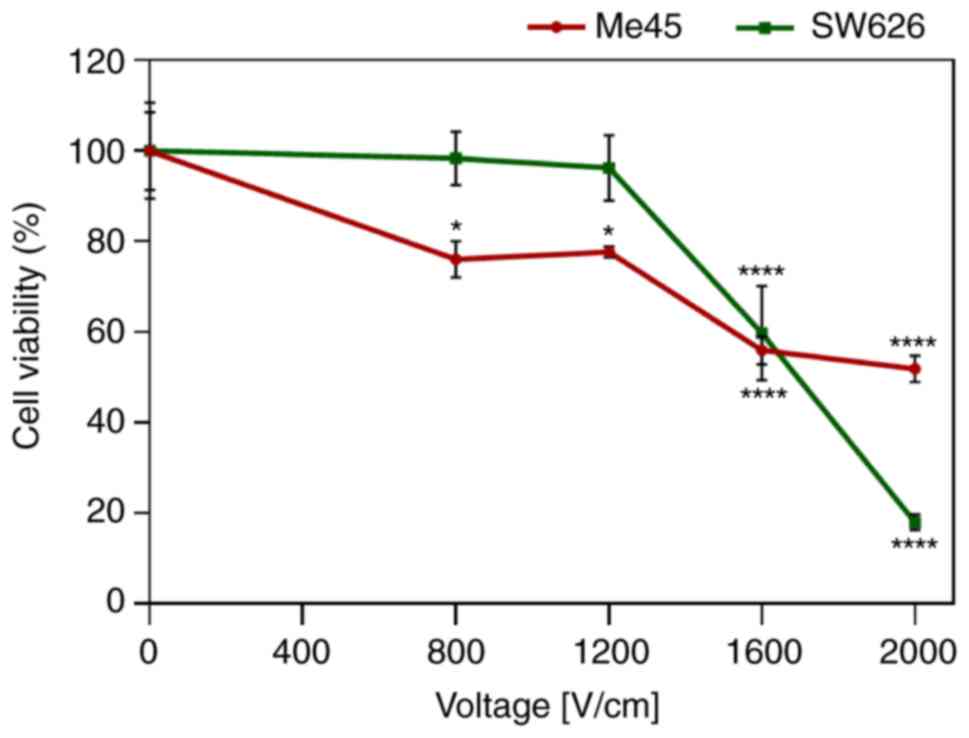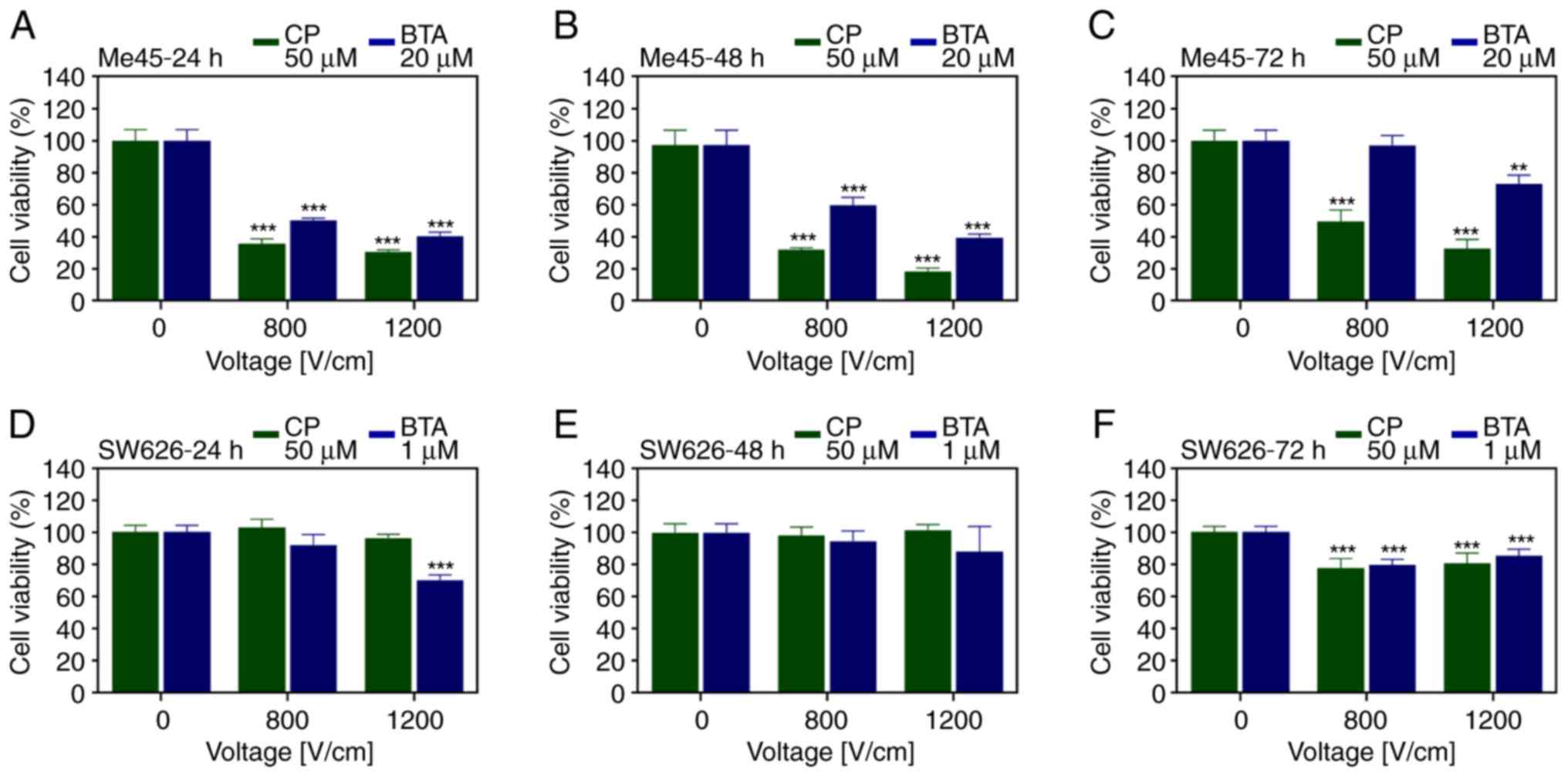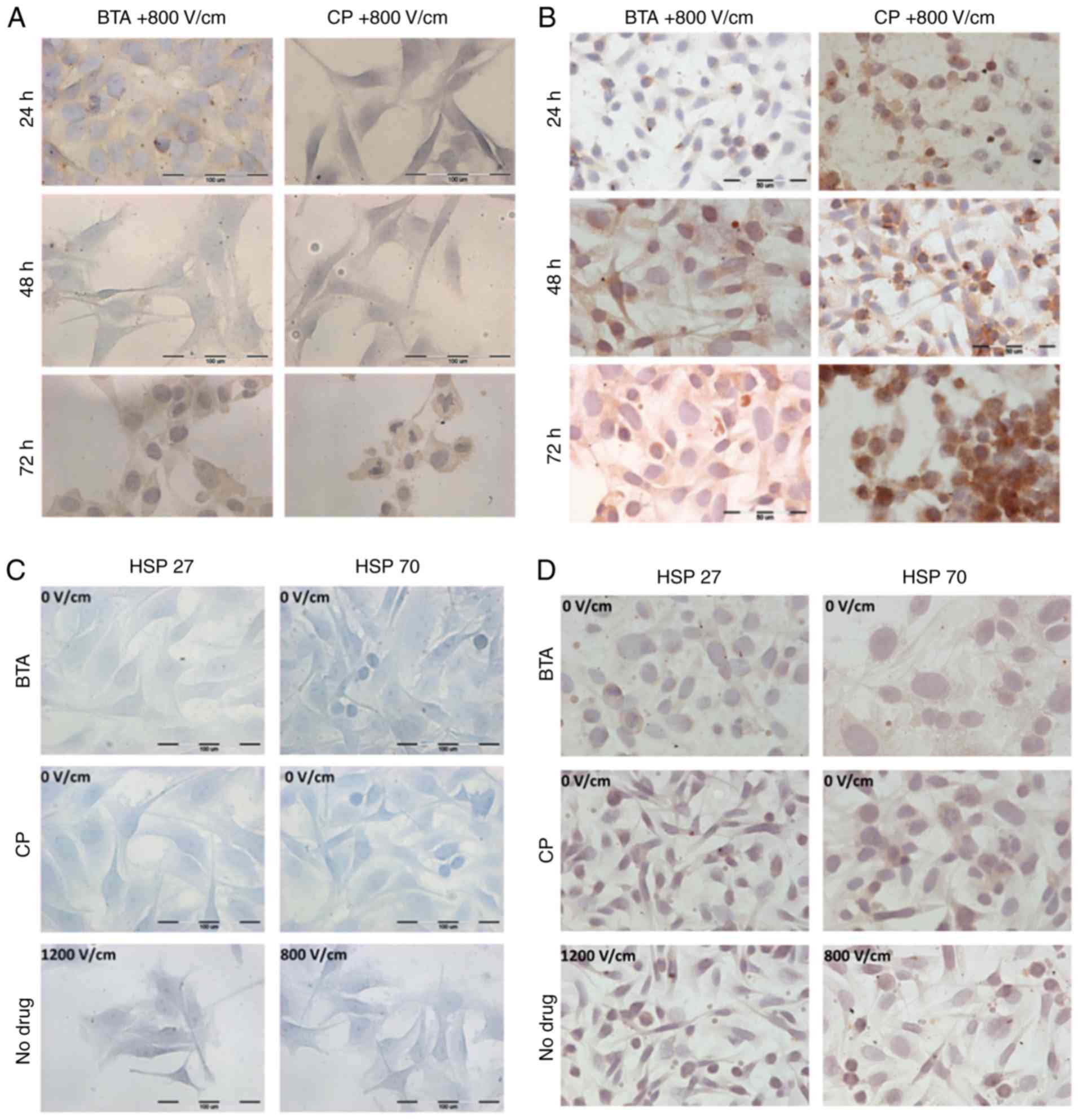|
1
|
Fulda S: Betulinic acid for cancer
treatment and prevention. Int J Mol Sci. 9:1096–1107. 2008.
View Article : Google Scholar : PubMed/NCBI
|
|
2
|
Osunsanmi FO, Shode FO and Opoku AR:
Anti-inflammatory activity of betulinic acid and its acetyl
derivative from melaleuca bracteata. S Afr J Bot. 103:342.
2016.http://dx.doi.org/10.4314/tjpr.v17i10.13
View Article : Google Scholar
|
|
3
|
Pavlova NI, Savinova OV, Nikolaeva SN,
Boreko EI and Flekhter OB: Antiviral activity of betulin, betulinic
and betulonic acids against some enveloped and non-enveloped
viruses. Fitoterapia. 74:489–492. 2003. View Article : Google Scholar : PubMed/NCBI
|
|
4
|
Bringmann G, Saeb W, Assi LA, François G,
Sankara Narayanan AS, Peters K and Peters EM: Betulinic acid:
Isolation from Triphyophyllum peltatum and Ancistrocladus
heyneanus, antimalarial activity, and crystal structure of the
benzyl ester. Planta Med. 63:255–257. 1997. View Article : Google Scholar : PubMed/NCBI
|
|
5
|
Damle AA, Pawar YP and Narkar AA:
Anticancer activity of betulinic acid on MCF-7 tumors in nude mice.
Indian J Exp Biol. 51:485–491. 2013.PubMed/NCBI
|
|
6
|
Eiznhamer DA and Xu ZQ: Betulinic acid: A
promising anticancer candidate. IDrugs. 7:359–373. 2004.PubMed/NCBI
|
|
7
|
Rzeski W, Stepulak A, Szymański M,
Sifringer M, Kaczor J, Wejksza K, Zdzisińska B and
Kandefer-Szerszeń M: Betulinic acid decreases expression of bcl-2
and cyclin D1, inhibits proliferation, migration and induces
apoptosis in cancer cells. Naunyn Schmiedebergs Arch Pharmacol.
374:11–20. 2006. View Article : Google Scholar : PubMed/NCBI
|
|
8
|
Ehrhardt H, Fulda S, Fuhrer M, Debatin KM
and Jeremias I: Betulinic acid-induced apoptosis in leukemia cells.
Leukemia. 18:1406–1412. 2004. View Article : Google Scholar : PubMed/NCBI
|
|
9
|
Schmidt ML, Kuzmanoff KL, Ling-Indeck L
and Pezzuto JM: Betulinic acid induces apoptosis in human
neuroblastoma cell lines. Eur J Cancer. 33:2007–2010. 1997.
View Article : Google Scholar : PubMed/NCBI
|
|
10
|
Chintharlapalli S, Papineni S, Ramaiah SK
and Safe S: Betulinic acid inhibits prostate cancer growth through
inhibition of specificity protein transcription factors. Cancer
Res. 67:2816–2823. 2007. View Article : Google Scholar : PubMed/NCBI
|
|
11
|
Drag-Zalesinska M, Kulbacka J, Saczko J,
Wysocka T, Zabel M, Surowiak P and Drag M: Esters of betulin and
betulinic acid with amino acids have improved water solubility and
are selectively cytotoxic toward cancer cells. Bioorg Med Chem
Lett. 19:4814–4817. 2009. View Article : Google Scholar : PubMed/NCBI
|
|
12
|
Pisha E, Chai H, Lee IS, Chagwedera TE,
Farnsworth NR, Cordell GA, Beecher CW, Fong HH, Kinghorn AD and
Brown DM: Discovery of betulinic acid as a selective inhibitor of
human-melanoma that functions by induction of apoptosis. Nat Med.
1:1046–1051. 1995. View Article : Google Scholar : PubMed/NCBI
|
|
13
|
Fulda S and Kroemer G: Targeting
mitochondrial apoptosis by betulinic acid in human cancers. Drug
Discov Today. 14:885–890. 2009. View Article : Google Scholar : PubMed/NCBI
|
|
14
|
Cichewicz RH and Kouzi SA: Chemistry,
biological activity, and chemotherapeutic potential of betulinic
acid for the prevention and treatment of cancer and HIV infection.
Med Res Rev. 24:90–114. 2004. View Article : Google Scholar : PubMed/NCBI
|
|
15
|
Bache M, Bernhardt S, Passin S, Wichmann
H, Hein A, Zschornak M, Kappler M, Taubert H, Paschke R and
Vordermark D: Betulinic acid derivatives NVX-207 and B10 for
treatment of glioblastoma-an in vitro study of cytotoxicity and
radiosensitization. Int J Mol Sci. 15:19777–19790. 2014. View Article : Google Scholar : PubMed/NCBI
|
|
16
|
Skolucka N, Saczko J, Kotulska M, Kulbacka
J and Choromanska A: Electroporation and its application. Pol
Merkur Lekarski. 28:501–504. 2010.(In Polish). PubMed/NCBI
|
|
17
|
Kotulska M, Kubica K, Koronkiewicz S and
Kalinowski S: Modeling the induction of lipid membrane
electropermeabilization. Bioelectrochemistry. 70:64–70. 2007.
View Article : Google Scholar : PubMed/NCBI
|
|
18
|
Sersa G, Miklavcic D, Cemazar M, Rudolf Z,
Pucihar G and Snoj M: Electrochemotherapy in treatment of tumours.
Eur J Surg Oncol. 34:232–240. 2008. View Article : Google Scholar : PubMed/NCBI
|
|
19
|
Kotulska M: Electrochemotherapy in cancer
treatment. Adv Clin Exp Med. 16:601–607. 2007.
|
|
20
|
Kazmierczuk A and Kilianska ZM: The
pleiotropic activity of heat-shock proteins. Postepy Hig Med Dosw
(Online). 63:502–521. 2009.(In Polish). PubMed/NCBI
|
|
21
|
Schlesinger MJ: Heat-shock proteins-the
search for functions. J Cell Biol. 103:321–325. 1986. View Article : Google Scholar : PubMed/NCBI
|
|
22
|
Cymerys J and Niemialkowski M:
Heat-shock-proteins-molecular-perpetual-motion. Post Biol Kom.
31:332–339. 2004.
|
|
23
|
Kaigorodova EV and Bogatyuk MV: Heat shock
proteins as prognostic markers of cancer. Curr Cancer Drug Targets.
14:713–726. 2014. View Article : Google Scholar : PubMed/NCBI
|
|
24
|
Kulczynska A, Kostur A and Piszcz J: Heat
shock proteins in the pathogenesis and treatment of cancer. Acta
Haematol Pol. 41:253–259. 2010.pthit.pl/download,ahp,538.
|
|
25
|
Kazmierczuk A and Kilianska ZM: Role of
heat shock proteins in cell apoptosis. Postepy Hig Med Dosw
(Online). 64:273–283. 2010.(In Polish). PubMed/NCBI
|
|
26
|
Liberek K, Lewandowska A and Zietkiewicz
S: Chaperones in control of protein disaggregation. EMBO J.
27:328–335. 2008. View Article : Google Scholar : PubMed/NCBI
|
|
27
|
Verbeke P, Fonager J, Clark BF and Rattan
SI: Heat shock response and ageing: Mechanisms and applications.
Cell Biol Int. 25:845–857. 2001. View Article : Google Scholar : PubMed/NCBI
|
|
28
|
Musial K and Zwolinska D: Heat shock
proteins in chronic kidney disease. Pediatr Nephrol. 26:1031–1037.
2011. View Article : Google Scholar : PubMed/NCBI
|
|
29
|
Garrido C, Schmitt E, Cande C, Vahsen N,
Parcellier A and Kroemer G: HSP27 and HSP70: potentially oncogenic
apoptosis inhibitors. Cell Cycle. 2:579–584. 2003. View Article : Google Scholar : PubMed/NCBI
|
|
30
|
Calderwood SK: Heat shock proteins and
cancer: Intracellular chaperones or extracellular signalling
ligands? Philos Trans R Soc Lond B Biol Sci. 373:201605242018.
View Article : Google Scholar : PubMed/NCBI
|
|
31
|
Lee CT and Repasky EA: Opposing roles for
heat and heat shock proteins in macrophage functions during
inflammation: A function of cell activation state? Front Immunol.
3:1402012. View Article : Google Scholar : PubMed/NCBI
|
|
32
|
Wang H, Tan MS, Lu RC, Yu JT and Tan L:
Heat shock proteins at the crossroads between cancer and
Alzheimer's disease. Biomed Res Int. 2014:2391642014.PubMed/NCBI
|
|
33
|
Vidyasagar A, Wilson NA and Djamali A:
Heat shock protein 27 (HSP27): Biomarker of disease and therapeutic
target. Fibrogenesis Tissue Repair. 5:72012. View Article : Google Scholar : PubMed/NCBI
|
|
34
|
Tian X, Zhao L, Song X, Yan Y, Liu N, Li
T, Yan B and Liu B: HSP27 inhibits homocysteine-induced endothelial
apoptosis by modulation of ROS production and mitochondrial
caspase-dependent apoptotic pathway. Biomed Res Int.
2016:48478742016. View Article : Google Scholar : PubMed/NCBI
|
|
35
|
Zheng G, Zhang Z, Liu H, Xiong Y, Luo L,
Jia X, Peng C, Zhang Q, Li N, Gu Y, et al: HSP27-mediated
extracellular and intracellular signaling pathways synergistically
confer chemo-resistance in squamous cell carcinoma of tongue. Clin
Cancer Res. 24:1163–1175. 2018. View Article : Google Scholar : PubMed/NCBI
|
|
36
|
Zhang Y and Shen X: Heat shock protein 27
protects L929 cells from cisplatin-induced apoptosis by enhancing
akt activation and abating suppression of thioredoxin reductase
activity. Clin Canc Res. 13:2855–2864. 2007. View Article : Google Scholar
|
|
37
|
Wang XP, Wang QX, Lin HP, Xu B, Zhao Q and
Chen K: Recombinant heat shock protein 70 functional peptide and
alpha-fetoprotein epitope peptide vaccine elicits specific
anti-tumor immunity. Oncotarget. 7:71274–71284. 2016.PubMed/NCBI
|
|
38
|
Shevtsov M and Multhoff G: Heat shock
protein-peptide and HSP-based immunotherapies for the treatment of
cancer. Front Immunol. 7:1712016. View Article : Google Scholar : PubMed/NCBI
|
|
39
|
Edhemovic I, Brecelj E, Gasljevic G,
Marolt Music M, Gorjup V, Mali B, Jarm T, Kos B, Pavliha D, Grcar
Kuzmanov B, Cemazar M, et al: Intraoperative electrochemotherapy of
colorectal liver metastases. J Surg Oncol. 110:320–327. 2014.
View Article : Google Scholar : PubMed/NCBI
|
|
40
|
Kumala S, Niemiec P, Widel M, Hancock R
and Rzeszowska-Wolny J: Apoptosis and clonogenic cell survival in
three tumour cell lines exposed to gamma rays or chemical genotoxic
agents. Cell Mol Biol Lett. 8:655–665. 2003.PubMed/NCBI
|
|
41
|
Helm CW and States JC: Enhancing the
efficacy of cisplatin in ovarian cancer treatment-could arsenic
have a role. J Ovarian Res. 2:22009. View Article : Google Scholar : PubMed/NCBI
|
|
42
|
Galluzzi L, Vitale I, Michels J, Brenner
C, Szabadkai G, Harel-Bellan A, Castedo M and Kroemer G: Systems
biology of cisplatin resistance: Past, present and future. Cell
Death Dis. 5:e12572014. View Article : Google Scholar : PubMed/NCBI
|
|
43
|
Wezgowiec J, Kulbacka J, Saczko J,
Rossowska J, Chodaczek G and Kotulska M: Biological effects in
photodynamic treatment combined with electropermeabilization in
wild and drug resistant breast cancer cells. Bioelectrochemistry.
123:9–18. 2018. View Article : Google Scholar : PubMed/NCBI
|
|
44
|
Michel O, Kulbacka J, Saczko J, Mączyńska
J, Błasiak P, Rossowska J and Rzechonek A: Electroporation with
cisplatin against metastatic pancreatic cancer: In vitro study on
human primary cell culture. BioMed Res Int. 2018:73645392018.
View Article : Google Scholar : PubMed/NCBI
|
|
45
|
Gothelf A, Mir LM and Gehl J:
Electrochemotherapy: Results of cancer treatment using enhanced
delivery of bleomycin by electroporation. Cancer Treat Rev.
29:371–387. 2003. View Article : Google Scholar : PubMed/NCBI
|
|
46
|
Saczko J, Kamińska I, Kotulska M, Bar J,
Choromańska A, Rembiałkowska N, Bieżuńska-Kusiak K, Rossowska J,
Nowakowska D and Kulbacka J: Combination of therapy with
5-fluorouracil and cisplatin with electroporation in human ovarian
carcinoma model in vitro. Biomed Pharmacother. 68:573–580. 2014.
View Article : Google Scholar : PubMed/NCBI
|
|
47
|
Esmekaya MA, Kayhan H, Coskun A and
Canseven AG: Effects of cisplatin electrochemotherapy on human
neuroblastoma cells. J Membr Biol. 249:601–610. 2016. View Article : Google Scholar : PubMed/NCBI
|
|
48
|
Cemazar M, Sersa G and Miklavcic D:
Electrochemotherapy with cisplatin in the treatment of tumor cells
resistant to cisplatin. Anticancer Res. 18:4463–4466.
1998.PubMed/NCBI
|
|
49
|
Zhao J, Li R, Pawlak A, Henklewska M,
Sysak A, Wen L, Yi JE and Obmińska-Mrukowicz B: Antitumor activity
of betulinic acid and betulin in canine cancer cell lines. In Vivo.
32:1081–1088. 2018. View Article : Google Scholar : PubMed/NCBI
|
|
50
|
Xu J, Wang X, Zhang H, Yue J, Sun Y, Zhang
X and Zhao Y: Synthesis of triterpenoid derivatives and their
anti-tumor and anti-hepatic fibrosis activities. Nat Prod Res.
16:1–7. 2018. View Article : Google Scholar
|
|
51
|
Chintharlapalli S, Papineni S, Lei P,
Pathi S and Safe S: Betulinic acid inhibits colon cancer cell and
tumor growth and induces proteasome-dependent and -independent
downregulation of specificity proteins (Sp) transcription factors.
BMC Cancer. 11:3712011. View Article : Google Scholar : PubMed/NCBI
|
|
52
|
Sun L, Cao J, Chen K, Cheng L, Zhou C, Yan
B, Qian W, Li J, Duan W, Ma J, et al: Betulinic acid inhibits
stemness and EMT of pancreatic cancer cells via activation of AMPK
signaling. Int J Oncol. 54:98–110. 2019.PubMed/NCBI
|
|
53
|
Periasamy G, Teketelew G, Gebrelibanos M,
Sintayehu B, Gebrehiwot M, Karim A and Geremedhin G: Betulinic acid
and its derivatives as anti-cancer agent: A review. Arch Appl Sci
Res. 6:47–58. 2014.
|
|
54
|
Yang S, Liang N, Li H, Xue W, Hu D, Jin L,
Zhao Q and Yang S: Design, synthesis and biological evaluation of
novel betulinic acid derivatives. Chem Cent J. 6:1412012.
View Article : Google Scholar : PubMed/NCBI
|
|
55
|
Pandita A, Kumar B, Manvati S, Vaishnavi
S, Singh SK and Bamezai RN: Synergistic combination of gemcitabine
and dietary molecule induces apoptosis in pancreatic cancer cells
and down regulates PKM2 expression. PLoS One. 9:e1071542014.
View Article : Google Scholar : PubMed/NCBI
|
|
56
|
Kutkowska J, Strzadala L and Rapak A:
Sorafenib in combination with betulinic acid synergistically
induces cell cycle arrest and inhibits clonogenic activity in
pancreatic ductal adenocarcinoma cells. Int J Mol Sci.
19:E32342018. View Article : Google Scholar : PubMed/NCBI
|
|
57
|
Mlakar V, Todorovic V, Cemazar M, Glavac D
and Sersa G: Electric pulses used in electrochemotherapy and
electrogene therapy do not significantly change the expression
profile of genes involved in the development of cancer in malignant
melanoma cells. BMC Cancer. 9:2992009. View Article : Google Scholar : PubMed/NCBI
|
|
58
|
Dressel R, Baraki H, Langer F and Gunther
E: Reduced susceptibility of electroporated tumor cell lines to
killing by cytotoxic lymphocytes. Biochem Biophys Res Commun.
250:259–263. 1998. View Article : Google Scholar : PubMed/NCBI
|
|
59
|
Vargas-Roig LM, Gago FE, Tello O, Aznar JC
and Ciocca DR: Heat shock protein expression and drug resistance in
breast cancer patients treated with induction chemotherapy. Int J
Cancer. 79:468–475. 1998. View Article : Google Scholar : PubMed/NCBI
|
|
60
|
Arts HJ, Hollema H, Lemstra W, Willemse
PH, De Vries EG, Kampinga HH and Van der Zee AG:
Heat-shock-protein-27 (hsp27) expression in ovarian carcinoma:
Relation in response to chemotherapy and prognosis. Int J Cancer.
84:234–238. 1999. View Article : Google Scholar : PubMed/NCBI
|
|
61
|
Tóth ME, Gombos I and Sántha M: Heat shock
proteins and their role in human diseases. Acta Biol Szeged.
59:121–141. 2015.https://www2.sci.u-szeged.hu/ABS/2015/Acta%20HPb/59121.pdf
|
|
62
|
Talele S and Gaynor P: Non-linear time
domain model of electropermeabilization: Effect of extracellular
conductivity and applied electric field parameters. J Electrost.
66:328–334. 2008.https://doi.org/10.1016/j.elstat.2008.02.002
View Article : Google Scholar
|
|
63
|
Hui TH, Zhou ZL, Fong HW, Ngan RK, Lee TY,
Au JS, Ngan AH, Yip TT and Lin Y: Characterizing the malignancy and
drug resistance of cancer cells from their membrane resealing
response. Sci Rep. 6:266922016. View Article : Google Scholar : PubMed/NCBI
|















